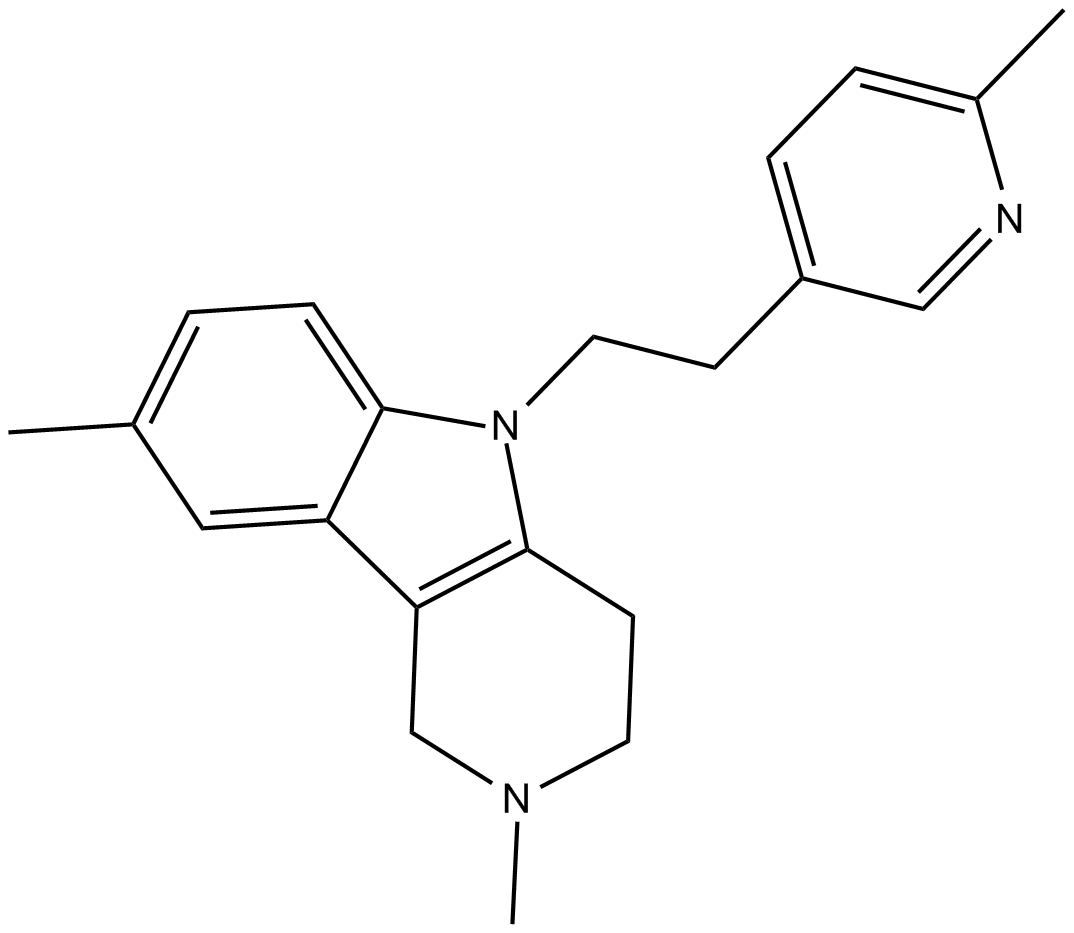Dimebolin (Synonyms: Dimebon™) |
| Catalog No.GC15723 |
antihistamine, orally-available
Products are for research use only. Not for human use. We do not sell to patients.

Cas No.: 3613-73-8
Sample solution is provided at 25 µL, 10mM.
Dimebolin is an orally-available antihistamine drug with a long history of clinical use in Russia [1][2][3][4].
Dimebolin has been proposed to be useful for treating neurodegenerative disorders, including Alzheimer's disease (AD) and Huntington's disease (HD). Dimebon might exhibit efficacy by blocking NMDA receptors or voltage-gated Ca2+ channels and by preventing mitochondrial permeability pore transition [3].
Dimebolin is an orally-available antihistamine drug. Dimebon improved survival of cerebellar granule cells during long-term incubation with Aβ25-35. Dimebolin also blocked potential-dependent Ca(2+) entry into neurons by about 20% by blocking L-type Ca(2+) channels [4]. In the cerebellum cell culture, Dimebolin protected neurons against the neurotoxic action of Aβ25-35 with EC50 value of 25 μM. On isolated rat ileum intestine, Dimebolin displayed Ca2+-blocking properties with IC50 value of 57 μM. Dimebon also exhibited anticholinesterase activity with IC50 values of 7.9 μM and 42 μM for butyryl-choline esterase and acetylcholine esterase, respectively [5].
In rats treated with the neurotoxin AF64A, Dimebolin exhibited cognition and memory-enhancing properties. In mice, Dimebolin prevented NMDA-induced seizures with EC50 value of 42 ± 6 mg/kg [5].
References:
[1]. Lermontova NN, Lukoyanov NV, Serkova TP, et al. Dimebon improves learning in animals with experimental Alzheimer's disease. Bull Exp Biol Med. 2000 Jun;129(6):544-6.
[2]. Doody RS, Gavrilova SI, Sano M, et al. Effect of dimebon on cognition, activities of daily living, behaviour, and global function in patients with mild-to-moderate Alzheimer's disease: a randomised, double-blind, placebo-controlled study. Lancet. 2008 Jul 19;372(9634):207-15.
[3]. Wu J, Li Q, Bezprozvanny I. Evaluation of Dimebon in cellular model of Huntington's disease. Mol Neurodegener. 2008 Oct 21;3:15.
[4]. Lermontova NN, Redkozubov AE, Shevtsova EF, et al. Dimebon and tacrine inhibit neurotoxic action of beta-amyloid in culture and block L-type Ca(2+) channels. Bull Exp Biol Med. 2001 Nov;132(5):1079-83.
[5]. Bachurin S, Bukatina E, Lermontova N, et al. Antihistamine agent Dimebon as a novel neuroprotector and a cognition enhancer. Ann N Y Acad Sci. 2001 Jun;939:425-35.
Average Rating: 5 (Based on Reviews and 20 reference(s) in Google Scholar.)
GLPBIO products are for RESEARCH USE ONLY. Please make sure your review or question is research based.
Required fields are marked with *




















